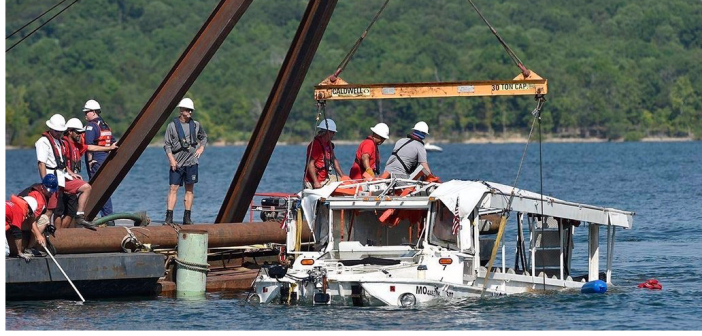The National Transportation Safety Board has just criticized the Coast Guard for ignoring suggestions about improving the safety of duck boats for almost 20 years. The proposals possibly could have prevented the sinking of a duck boat, known as Stretch Duck 7, in a storm on July 23, 2018, on Table Rock Lake in Branson, Missouri, killing 17 people on board.
The criticism came in a NTSB Safety Recommendation Report even while the federal agency is still investigating the sinking. The NTSB is urging the Coast Guard to require sufficient reserve buoyancy on duck boats (amphibious passenger vessels similar to those used in the Second World War), and to require the removal of canopies, side curtains and their framing while underway. The NTSB’s investigation is continuing, but it said information it has gained so far warranted the safety recommendation.
The NTSB says it has identified the lack of reserve buoyancy and the dangers of canopies (which can prevent people from leaving the vessel) ever since another duck boat sank in 1999. “Lives could have been saved, and the Stretch Duck 7 accident could have been prevented, had previously issued safety recommendations been implemented,” said NTSB Chairman Robert L. Sumwalt.
The NTSB also said that duck boats’ low freeboard and open interior make them “vulnerable to rapid swamping and sinking” when they are flooded. On Stretch Duck 7, a sudden storm poured water over the boat, sinking it in a matter of minutes. The report said the fixed canopy and closed side curtains impeded passenger escape. Only 14 of the boat’s 31 passengers survived. Read the report below;
https://www.ntsb.gov/investigations/AccidentReports/Reports/MSR1901.pdf




